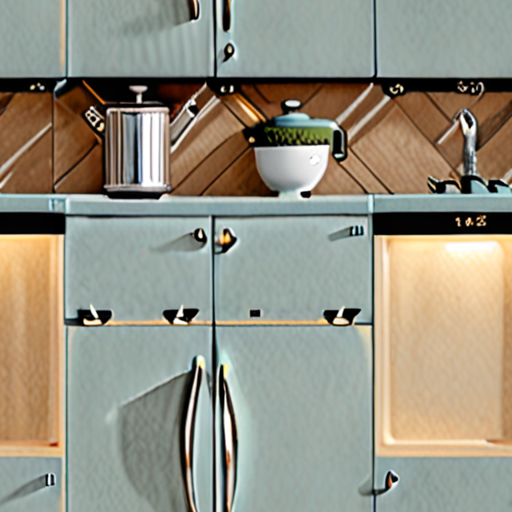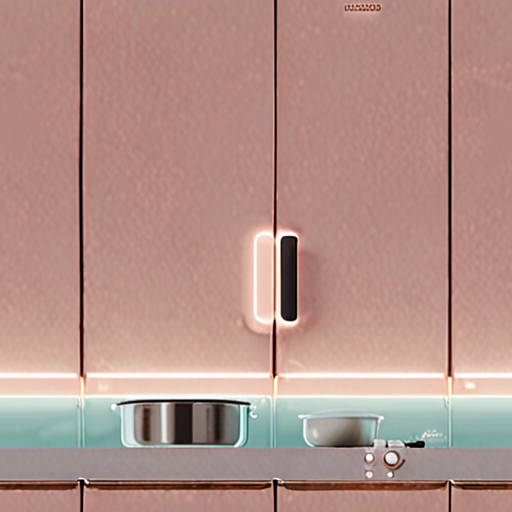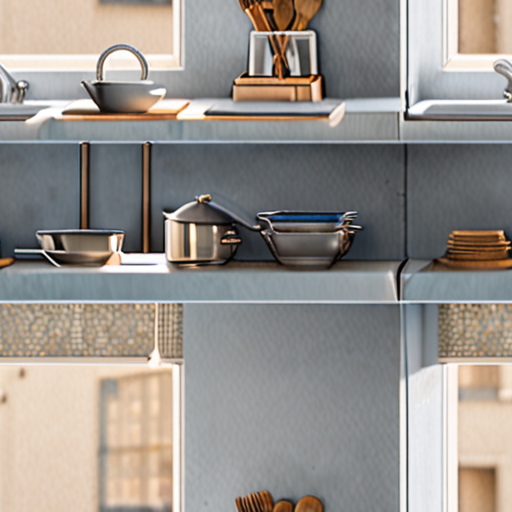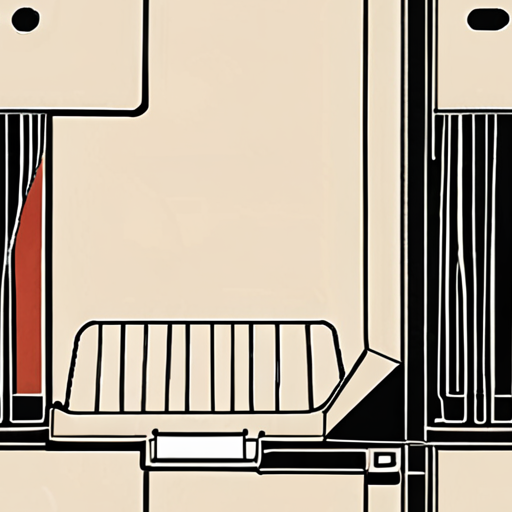When it comes to designing a functional and aesthetically pleasing kitchen in a small space, homeowners often face numerous challenges. From maximizing storage capacity to creating an efficient workflow, every aspect of the kitchen requires careful consideration. In this comprehensive guide, we’ll explore compact kitchen ideas that cater to various budgets and preferences, providing valuable insights into the latest design trends and expert advice on how to elevate small spaces with strategic design and advanced SEO-focused article writing techniques. By understanding what works and what doesn’t in compact kitchen design, readers will gain a deeper appreciation for the importance of functionality, aesthetics, and clever spatial planning in creating a truly exceptional cooking environment.

The Best Type of Kitchen for Small Spaces
We understand that having a functional kitchen in a small space can be challenging, but there are several options available to suit your needs.
- L-Shaped Kitchens: These kitchens are ideal for small spaces as they maximize corner storage and minimize wasted space.
- U-Shaped Kitchens: U-shaped kitchens are perfect for compact spaces, offering ample counter and storage space while keeping the floor clear.
- Galley Kitchens: Galley kitchens are narrow and long, making them suitable for small spaces. They often feature a central island for added counter space.
- Island Kitchens: Island kitchens are great for small spaces, providing additional counter and storage space while separating the cooking area from the rest of the room.
When choosing the best type of kitchen for your small space, consider factors such as functionality, storage, and workflow efficiency.
- Optimize Storage: Make the most of your kitchen’s vertical space by installing wall-mounted shelves, cabinets, and hooks.
- Select Space-Saving Appliances: Choose compact appliances, such as microwave ovens and toaster ovens, to save valuable counter space.
- Incorporate Multi-Functional Furniture: Consider furniture pieces that serve multiple purposes, like a kitchen cart with built-in storage and a sink.
- Utilize Corner Space: Use corner carousels, baskets, or turntables to maximize storage potential in tight spaces.
By incorporating these design principles into your kitchen layout, you’ll be able to create a functional and efficient cooking space that suits your small space requirements.
Additional Tips for Small Kitchen Design
- Choose Light Colors: Select light-colored cabinetry, countertops, and walls to create a sense of openness and visual expansion.
- Minimize Clutter: Keep your kitchen counters and floors clear of clutter to maintain a sense of spaciousness.
- Consider Vertical Elements: Incorporate vertical elements, such as pendant lights or a statement backsplash, to draw the eye upwards and create a sense of height.
Final Thoughts
A well-designed kitchen in a small space requires careful consideration of functionality, storage, and workflow efficiency. By implementing these design principles and tips, you’ll be able to create a functional and efficient cooking space that meets your needs and enhances your overall living experience.
Maximizing Space in Small Kitchens
To make a kitchen in a small space functional and efficient, consider these essential tips:
-
Optimize Layout and Storage
Assess your kitchen’s layout and identify areas for improvement. Consider installing wall-mounted shelves, hooks, and cabinets to maximize vertical storage. Utilize corner spaces with carousel units or turntables to keep frequently used items accessible.
-
Select Multi-Functional Appliances
Choose compact appliances that serve multiple purposes, such as a microwave-toaster oven combo or a refrigerator with a built-in freezer. These space-saving solutions can help reduce clutter and free up valuable counter space.
-
Incorporate Foldable and Retractable Elements
Folding tables, retractable cutting boards, and collapsible pot racks can help create extra counter space when needed. These versatile features can also contribute to a more streamlined appearance.
-
Utilize Hidden Compartments and Secret Storage
Install hidden compartments, secret drawers, or sliding panels to conceal clutter and keep your kitchen organized. These clever storage solutions can help maintain a sense of openness and visual flow.
-
Invest in Space-Saving Cookware and Utensils
Choose cookware and utensils with compact designs, such as nesting pots and pans or foldable silicone spatulas. These space-efficient tools can help minimize clutter and optimize your kitchen’s functionality.
-
Consider Vertical Gardening and Window Boxes
Make the most of your kitchen’s windows by incorporating vertical gardening systems or window boxes. These green spaces can add a touch of nature and freshness to your kitchen while also providing a unique storage solution.
-
Implement Smart Lighting and Electrical Solutions
Install LED lighting strips under cabinets or use puck lights to create a brighter, more inviting atmosphere. Consider smart electrical outlets or USB ports to keep devices charged and within easy reach.
-
Integrate Technology and Automation
Explore smart kitchen gadgets and automation systems that can streamline tasks, such as automated trash cans or voice-controlled coffee makers. These innovative solutions can enhance your kitchen’s efficiency and convenience.
- Maintain a Clutter-Free Countertop</hassistant

What’s Outdated in the Kitchen?
When it comes to giving your kitchen a modern makeover, there are several outdated features that can instantly give away its age.
- Cabinetry
- Granite Countertops
- Light Fixtures
- Appliances
- Flooring
- Backsplash
Cabinets with outdated styles, such as those made from pine or hickory, can quickly date your kitchen’s look. Similarly, cabinetry with gold or brass fixtures may indicate that the kitchen hasn’t received an update in a while.
While granite countertops are still popular today, pairing them with outdated cabinetry can create a dated look. Consider updating your cabinetry to match your countertops for a more cohesive and modern appearance.
Outdated light fixtures, such as those with exposed bulbs or ornate metalwork, can quickly become a focal point in your kitchen. Consider replacing them with sleeker, more modern options to create a brighter and more inviting space.
Old appliances, particularly those with outdated finishes or designs, can quickly give away the age of your kitchen. Consider upgrading to newer models with modern finishes and features to create a more streamlined look.
Outdated flooring, such as linoleum or worn-out hardwood, can quickly become a eyesore in your kitchen. Consider updating your flooring to a more modern option, such as tile or engineered hardwood, to create a fresh and updated look.
A dated backsplash, particularly one with outdated materials or designs, can quickly become a focal point in your kitchen. Consider updating your backsplash to a more modern option, such as glass tile or stainless steel, to create a sleek and updated look.
By addressing these outdated features, you can give your kitchen a modern makeover that’s sure to impress.

The Best Shape for a Small Kitchen
When designing a small kitchen, choosing the right layout can greatly impact functionality and efficiency.
- L-Shaped Kitchens:
- Galley Kitchens:
- U-Shaped Kitchens:
- Island Kitchens:
An L-shaped kitchen is ideal for small spaces as it creates a functional work triangle between the sink, stove, and refrigerator.
This layout allows for easy movement and workflow, making it perfect for compact kitchens.
A galley kitchen is a great option for narrow spaces, featuring countertops and appliances along two parallel walls.
This layout offers excellent storage and workspace efficiency, making it suitable for small kitchens.
A U-shaped kitchen is another popular choice for small kitchens, offering ample counter space and storage.
This layout is ideal for compact kitchens with limited square footage.
An island kitchen is perfect for small kitchens with limited counter space.
This layout adds extra storage and counter space, making it ideal for compact kitchens.
Ultimately, the best shape for a small kitchen depends on personal preference and available space.
Consider factors such as workflow, storage needs, and available square footage when selecting the ideal layout for your small kitchen.
By choosing the right layout, you can create a functional and efficient small kitchen that meets your needs and enhances your cooking experience.
What Color Flooring Makes a Kitchen Look Bigger?
When it comes to making a small kitchen appear larger, choosing the right flooring color plays a significant role.
- Opt for light-colored flooring options that can effectively reflect natural and artificial light, creating the illusion of a more spacious area.
- Consider flooring materials such as tile or engineered wood, which come in a variety of light colors suitable for small kitchens.
Popular Light-Colored Flooring Options:
- Bleached Wood Tones: A popular choice for small kitchens, bleached wood tones can add warmth and coziness to the space while creating the illusion of a larger area.
- Soft Whites: A clean and crisp option, soft white flooring can make a small kitchen appear brighter and more spacious.
- Sandy Beige: A versatile and calming option, sandy beige flooring can complement various kitchen styles and create a sense of openness.
- Soft Grays: A modern and sleek option, soft gray flooring can add a touch of sophistication to a small kitchen while creating the illusion of a larger space.
Tips for Choosing the Right Flooring Color:
- Consider the overall aesthetic you want to achieve in your kitchen, including the style, color scheme, and lighting.
- Think about the natural light available in your kitchen and how it will affect the appearance of the flooring.
- Don’t forget to consider the durability and maintenance requirements of the flooring material you choose.

The Least Efficient Kitchen Shape
In evaluating various kitchen layouts, it’s essential to consider factors such as workflow efficiency, storage capacity, and overall functionality.
- L-Shaped Kitchens:
- While L-shaped kitchens can be effective in certain situations, they often fail to provide a seamless workflow due to the presence of two perpendicular walls.
- This layout style can lead to congestion and bottlenecks, particularly when navigating between the cooking area and the sink or refrigerator.
- Peninsula Kitchens:
- Peninsula kitchens can be inefficient if the peninsula protrudes too far into the room, obstructing the walkway and hindering movement.
- A well-designed peninsula can enhance the kitchen’s functionality, but its placement and size are crucial in avoiding unnecessary obstacles.
- U-Shaped Kitchens:
- U-shaped kitchens offer excellent workflow efficiency and ample storage opportunities, making them a popular choice among homeowners.
- However, this layout style can be less suitable for smaller kitchens, as it requires a significant amount of floor space to accommodate the three walls.
- G-Shaped Kitchens:
- G-shaped kitchens combine the benefits of U-shaped and L-shaped layouts, offering a spacious workflow and generous storage options.
- This layout style is ideal for larger kitchens, as it allows for a smooth circulation path and easy access to appliances and cabinets.
Conclusion
When determining the most efficient kitchen shape, it’s vital to weigh the pros and cons of each layout style based on individual needs and preferences.
By considering factors such as workflow efficiency, storage capacity, and overall functionality, homeowners can choose the perfect kitchen layout that suits their lifestyle and enhances their cooking experience.

0 Comments